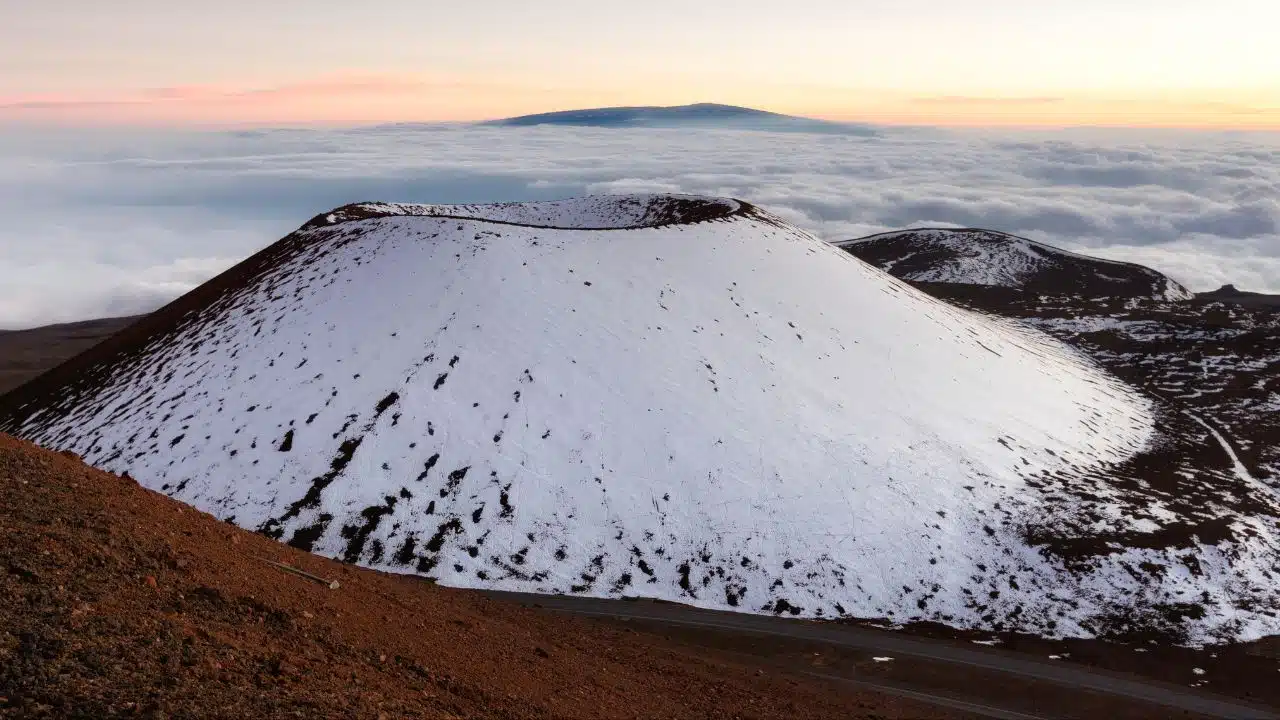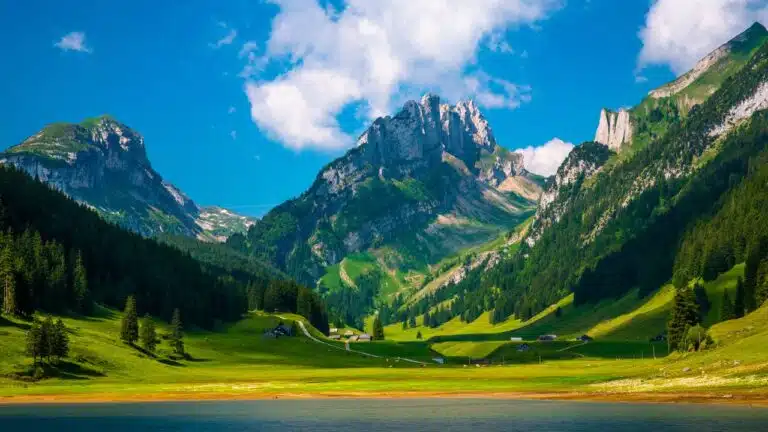In a land of sun-kissed beaches and swaying palm trees, you wouldn’t expect to find one of the world’s best sites to go skiing. But that’s just what you can expect in Hawaii: the unexpected. Amid the lush splendor of the Hawaiian islands lie towering peaks and powder-dusted slopes. And for the adventure seeker comes an opportunity too extraordinary and too unique to pass up. But before you book your flight to barrel down the mountain, here are some things to know about skiing in Hawaii.
Table of Contents
- Is There Any Skiing in Hawaii?
- Which Island in Hawaii Gets Snow?
- What’s the Best Month to Go Skiing in Hawaii?
- Where’s the Best Place to Ski in Hawaii?
- Take to the Slopes in the Tropics with Next Vacay
Is There Any Skiing in Hawaii?
It seems like an elaborate joke, but you really can go skiing in Hawaii, thanks to Mauna Kea. Translated as the White Mountain, visitors to the island quickly discover how apt the name is. Mauna Kea is often crowned with snow, giving guests a singular opportunity to ski in paradise.
Mauna Kea is no ordinary giant. The towering mountain looms large at over 13,500 feet above sea level. However, when you consider the additional 19,000 feet stretching to the ocean floor, its size quickly adds up to the world’s highest mountain. Mauna Kea is over 33,000 feet tall and is larger than the great Mount Everest from base to tip. So, it’s no wonder that daredevil skiers and snowboarders flock to the Hawaiian Islands. Alongside the quintessential image of an island paradise exists the chance to live out the dream of dusting fresh powder in the most unlikely of places.
Which Island in Hawaii Gets Snow?
It doesn’t snow in many places in Hawaii—there’s a reason most people think of it as a tropical oasis, after all. Snow only falls on two islands in Hawaii: the Big Island and Oahu. On these islands, only the tallest peaks, over 9,000 feet in elevation, ever see any snow.
Haleakala (10,023 feet) on Maui rarely sees any snow. In contrast, Mauna Loa (13,679 feet) and Mauna Kea (13,796 feet) experience snow annually. So, if you’re planning a Hawaii skiing trip, your best bet is heading to the Big Island. And because Mauna Kea last erupted over 4,500 years ago, it’s a much safer skiing destination than Mauna Loa, which just erupted in 2022 for the first time in 38 years.
What’s the Best Month to Go Skiing in Hawaii?
Snow in Hawaii is temperamental, to say the least. Even the summer months see snow on the summit of Mauna Kea, albeit only occasionally. Unfortunately, it’s never guaranteed, even in the winter months. Consequently, if you want to join the Hawaii skiing club, plan to visit Mauna Kea between January and March.
While winter in Hawaii is fairly mild, with daytime temperatures varying from 76°F to 84°F, that’s only true for the parts that sit a few thousand feet above sea level. Its peaks are another matter entirely. The top of Mauna Kea rises almost 10,000 feet above the rest of the Big Island. With that sizable jump in elevation comes an accompanying drop in temperature.
Winter temperatures range from chilling to glacial on Mauna Kea. Although they rarely climb higher than 40°F, temperatures can fall as low as 25°F. Of course, that’s before you take the wind chill into account. Bracing winds can plummet the already low winter temperature to below freezing! And the best chance for snow is smack dab in the middle of the coldest months.
Where’s the Best Place to Ski in Hawaii?
You can only ski in Hawaii in one spot: the top of Mauna Kea. But this volcanic mountain is not for the faint of heart. You won’t find any fancy Mauna Kea ski resort waiting for you or handy ski lifts to take you from the bottom of the mountain to the top. So, what is Mauna Kea skiing really like? Here’s what you need to know about skiing on this dormant volcano in Hawaii.
Skiing on Mauna Kea
From sun-kissed to frost-bitten, it’s not every day you can go scuba diving in the tropics before climbing 13,000 feet to snow ski down a dormant volcano. But Hawaii is a different animal that caters to avid beachgoers and winter sports enthusiasts. So, if you identify as the latter, buckle up for the lowdown on dusting the slopes of Mauna Kea.
The Conditions
We said skiing in Hawaii is no joke, and we meant it. The top of Mauna Kea is entirely unlike the rest of the Big Island. While the snow is jarring enough, the high altitude and drop in air pressure will likely get to you first. Many intrepid explorers have been done in by altitude sickness on the slopes of Mauna Kea.
Or, your ski trip plans could be done in by high winds before you even reach the top. Remember that wind chill we mentioned? Occasionally, it can grow so strong as to make ascending the mountain too dangerous. Or, you may turn up and find a lack of skiable terrain. Snow conditions on Mauna Kea are highly variable, even in winter.
With so many factors at play, and no ski patrol looking out for you, it’s essential to prepare for Mauna Kea appropriately. Because while the landscape may seem unassuming, make no mistake; skiing in Hawaii is skiing in the wild.
Consequently, before making the long journey up the mountain, it’s best to check the weather forecast via the Hawaii Institute for Astronomy or the National Weather Service. And unlike when traveling to the rest of Hawaii, when you come to ski, you’ll want to do anything but pack light. Thanks to Mauna Kea’s top height of over 13,000 feet, the sun’s rays can cause severe eye and skin damage. So, with your extra layers and ski gear, don’t forget to pack some sunscreen and eye protection too.
The Transportation
The towering palm trees and infinite ocean may clue you in, but this isn’t Aspen. So don’t expect the royal ski resort treatment at Mauna Kea. The mountain makes you work for every inch of thrill, but that—along with the incredible view—is what makes skiing in Hawaii such a treat.
Because there are no resort-like accommodations, you should carefully plan any ski trips to Mauna Kea. Without a ski lift to take you up and down, you’ll need a four-wheel drive to traverse the mountain and another driver to take you from the bottom back to the top.
With such limited resources, you might guess where this is going next. Without any ski rentals around, you’ll have to bring your own equipment. But because the mountain terrain can quickly change from pineapple powder to lava rocks, you may want to leave your newer, shinier gear at home.
The Experience
Skiing on Mauna Kea in Hawaii is an experience you won’t find anywhere else on earth. The vista from the top opens up a whole new world with incredible views out over the clouds. Standing at the top, you can understand why Hawaiian people consider Mauna Kea sacred and why observatory stations dot the summit. Perched above the clouds, it feels like you’ve entered a heavenly realm. Clear days reveal stunning views of Mauna Kea’s sister volcano Mauna Loa and even Haleakala on Maui.
As for skiing, some claim Mauna Kea has the best snow on earth. But whether that’s true, there’s only one way to know for certain, and that’s finding out for yourself!
Take to the Slopes in the Tropics with Next Vacay
Between the ever-changing weather and snow conditions on Mauna Kea, skiing in Hawaii isn’t always easy. But you know what is? Finding mind-blowing deals to the Hawaiian Islands with Next Vacay.
Next Vacay is here to make your future travels easy. With a team of real live humans that search and verify deals for you, you never have to worry about overspending on flights or putting off your trip to paradise ever again. So, if you’ve been waiting for a sign to head to Hawaii and conquer Mauna Kea’s slopes, consider this it. Fly with Next Vacay, and you’ll be shredding the slopes in no time.



